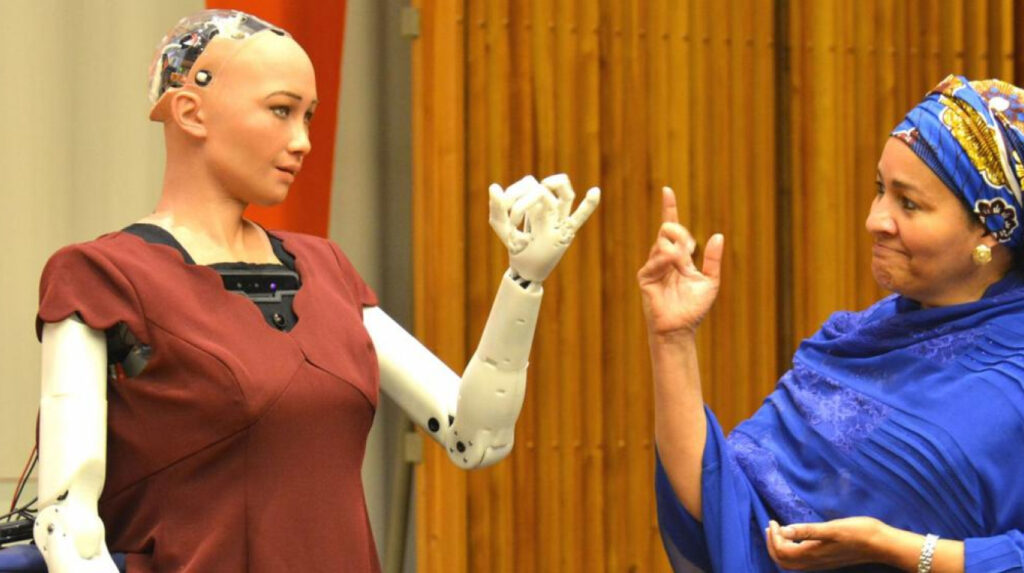INTRO:
In the realm of technological advancements, the emergence of new modern AI robot humanoids has sparked a wave of transformative possibilities across industries worldwide. These sophisticated machines, equipped with artificial intelligence capabilities, have the potential to revolutionize the way we work, offering a plethora of financial benefits.
However, as we delve deeper into the realm of robotic automation, it becomes imperative to explore not only the potential advantages but also the future disasters that may accompany the rise of AI robot humanoids.
In this article, we aim to shed light on the financial benefits that new modern AI robot humanoids bring to the table. We will delve into ten key advantages that businesses and industries can harness, ranging from increased productivity and reduced labor costs to improved safety and streamlined customer service. These financial benefits have the potential to reshape the landscape of various sectors and open doors to unprecedented growth and profitability.
However, we must also acknowledge the potential risks and future disasters that loom on the horizon. In the second section of this article, we will address seven critical concerns that demand our attention. These include the displacement of jobs, ethical dilemmas surrounding AI decision-making, security risks, dependency on technology, a lack of human interaction, economic inequality, and the loss of control over highly advanced and autonomous AI robot humanoids.
By exploring both the financial benefits and potential perils, we aim to provide a comprehensive understanding of the implications that these modern AI robot humanoids may have on our economic landscape and society as a whole. Striking a delicate balance between embracing the advantages and proactively addressing the risks will be crucial as we navigate the uncharted territory of this rapidly evolving technological frontier.
Join us as we embark on a journey to uncover the financial prospects and potential pitfalls of new modern AI robot humanoids, shedding light on the opportunities and challenges that lie ahead.

Section 1: 10 Financial Benefits of New Modern AI Robot Humanoids
1. Increased Productivity:
AI robot humanoids can perform tasks with exceptional speed and precision, resulting in enhanced productivity. This efficiency translates into cost savings and improved output in industries such as manufacturing and logistics.
2. Reduced Labor Costs:
By automating repetitive tasks, AI robot humanoids can significantly reduce labor costs. As they don’t require salaries, benefits, or breaks, businesses can save a substantial amount of money by employing these machines to handle routine operations.
3. Improved Safety:
AI robot humanoids can undertake hazardous or dangerous tasks, eliminating the need for human workers to face potential risks. This mitigates the costs associated with workplace accidents, insurance claims, and worker compensation.
4. Precision and Accuracy:
AI robot humanoids are designed to execute tasks with utmost precision, leading to higher accuracy rates. This reduces errors, rework, and associated costs, particularly in industries like manufacturing, quality control, and data analysis.
5. 24/7 Operations:
Unlike human workers, AI robot humanoids can operate continuously without the need for rest or breaks. This round-the-clock availability ensures uninterrupted production and service delivery, maximizing revenue potential.
6. Streamlined Customer Service:
AI robot humanoids equipped with natural language processing capabilities can provide personalized and efficient customer support. This reduces the need for large customer service teams, resulting in substantial cost savings.
7. Enhanced Supply Chain Management:
AI robot humanoids can optimize supply chain processes by efficiently managing inventory, tracking shipments, and automating logistics operations. This leads to cost reductions, improved inventory management, and faster order fulfillment.
8. Data-driven Decision Making:
AI robot humanoids can collect and analyze vast amounts of data in real-time, enabling businesses to make data-driven decisions. This enhances operational efficiency, minimizes waste, and improves financial outcomes.
9. Improved Predictive Maintenance:
Through advanced sensors and analytics, AI robot humanoids can detect equipment malfunctions or maintenance requirements. This proactive approach to maintenance prevents costly breakdowns, extends the lifespan of assets, and reduces downtime.
10. Competitive Advantage:
Adopting new modern AI robot humanoids can provide businesses with a competitive edge. By leveraging their capabilities, companies can innovate faster, optimize processes, and deliver superior products or services, leading to increased market share and profitability.

Section 2: 7 Future Disasters of AI Robot Humanoids
1. Job Displacement:
The widespread adoption of AI robot humanoids may lead to significant job displacement, particularly in industries heavily reliant on manual labor. This could result in economic disparities and social unrest.
2. Ethical Dilemmas:
As AI robot humanoids become more advanced, ethical questions surrounding their decision-making capabilities and potential misuse may arise. Ensuring the responsible use of AI technology is essential to avoid unintended consequences.
3. Security Risks:
AI robot humanoids connected to networks can be vulnerable to cyberattacks. Breaches in security could lead to unauthorized access, data theft, or even physical harm if these machines are involved in critical operations.
4. Dependency on Technology:
Over-reliance on AI robot humanoids could leave societies vulnerable to system failures or malfunctions. It’s crucial to maintain backup plans and alternative solutions to mitigate the impact of potential disruptions.
5. Lack of Human Interaction:
While AI robot humanoids can simulate human-like interactions, they cannot replace the emotional and social connections that humans value. Isolation and a decline in human-to-human interaction could have psychological and societal consequences.
6. Economic Inequality:
The cost of acquiring and maintaining AI robot humanoids could create economic disparities, favoring larger corporations over smaller businesses. This inequality may further concentrate wealth and resources in the hands of a few.
7. Loss of Control:
If AI robot humanoids become too advanced and autonomous, there is a risk of losing control over their decision-making processes. This could lead to unintended actions or behaviors that are difficult to predict or manage.
CONCLUSION:
As we embrace the potential of AI robot humanoids, it is crucial to strike a balance between harnessing their financial benefits and addressing the challenges they present. Implementing robust regulations, ethical guidelines, and comprehensive risk management strategies will be key to shaping a future where AI and humans coexist harmoniously.